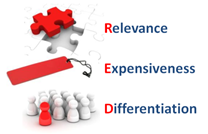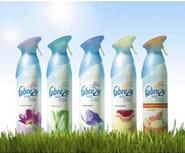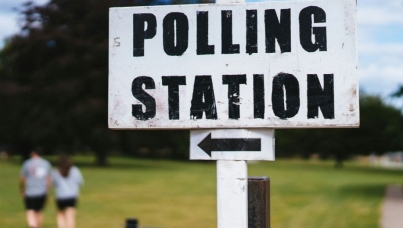Behavioural Economics: from behavioural insight to Innovation
The use of behavioural economics in research has been a healthy injection to the industry, making sure that the quirks of human behaviour are not only acknowledged, but cherished. Placing behavioural economics in developing product innovation is about connecting behavioural insight to a potential white space, and then harnessing ‘fast thinking’ techniques to optimise the way people interact with the product.
The route to successful innovation has two key stages to it; identifying the white space to define a proposition, and optimising the proposition for market. Behavioural economics has highlighted particular cognitive biases and heuristics that affect our behaviour which can be woven into different aspects of research.
The first step is, when looking for white spaces, to conduct research with a behavioural grounding. Studying behaviour using an ethnographic approach is a fantastic way of seeking out white spaces as it centres the research on how products are used day to day. Studying behaviour in this way naturally lends itself to the theories of behavioural economics, by looking at:
- default choices (being guided by what’s available in a particular place);
- fast choices when choosing products (leading to consumers relying on price as a comparator);
- zero-sum equations (trading good foods for bad foods, as opposed to calorie counting);
These everyday behaviours are demonstrated regularly and help us understand white space potential.
 Many FMCG companies target the holy grail of a cleaning product that Mum can’t do without. In 1998, P&G created a product based on observing Mum’s cleaning habits that they thought Mum’s couldn’t do without – a spray that eliminated odours. This was genuinely new, fitted with current cleaning behaviours, and played into a sense of motherly satisfaction of not having a smelly house. In a behavioural sense, it neutralised – even improved – the smell of the house (a zero-sum equation), it tapped into the fast thinking element of satisfaction in cleaning (fast product choices), and P&G flooded the market to make it a default product in shops.
Many FMCG companies target the holy grail of a cleaning product that Mum can’t do without. In 1998, P&G created a product based on observing Mum’s cleaning habits that they thought Mum’s couldn’t do without – a spray that eliminated odours. This was genuinely new, fitted with current cleaning behaviours, and played into a sense of motherly satisfaction of not having a smelly house. In a behavioural sense, it neutralised – even improved – the smell of the house (a zero-sum equation), it tapped into the fast thinking element of satisfaction in cleaning (fast product choices), and P&G flooded the market to make it a default product in shops.
The product worked, the concept fitted, the bottles sold. White space filled.
The second application for behavioural economics is related to bringing the product to market through testing the innovation. The successful application of the RED scores – Relevance, Expensiveness, and Differentiation – to test product success in market is well documented and is a good fail safe in predicting market success.
 The RED scoring tests for how a product will perform, gives an indication as to where it could improve, but does not necessarily apply the product to a behavioural insight.
The RED scoring tests for how a product will perform, gives an indication as to where it could improve, but does not necessarily apply the product to a behavioural insight.
The application of behavioural economics can be directly applied to the RED scores, taking known heuristics and biases and applying them to particular scores where a product could be improved. For instance, if a product lacks Relevance there are a set of cognitive biases that could be harnessed in order to make the product feel more relevant.
From the ever-expanding list of biases and heuristics that details the quirks of human behaviour, a list can be created that relate to enhancing specific RED scores, such as:
BIASES RELATING TO RELEVANCE:
- The use of Anchors: a product needs to relate to a fundamental meaning – ie health is about looking good / giving people a boost when they are down / medical tests;
- The power of Reciprocity: thanking someone for their engagement; reciprocity is an understanding that you are both giving and taking at the same time;
- Getting a reward: getting something for free, a drink coming with your newspaper (also relates to Expensiveness, depending on the application);
- Social norms / Caldini’s norms: noting that other people like you are doing the same thing, or people like me are buying this product;
BIASES RELATING TO EXPENSIVENESS:
- Using the Projection bias: the inability to see your future self, leading to buying ‘opportunity ‘ in a product;
- Time/cost continuum: reframing the cost over a different period of time, such as buying a product lasting for numerous years reduces the initial outlay;
BIASES RELATING TO DIFFERENTIATION:
- Short term gains: creating something short / long-lasting, giving someone a short-term boost to think that they therefor feel better;
- The Framing of a product: through looking at the range of a product, what it sits next to, and the importance of a decoy product;
- Choosing from Defaults: the way in which a product is dispensed, a carton is made for drinking, (depending on how this done, it could relate to Differentiation (size of can), or Consumption (large hole, you drink a lot).
 These different behavioural and cognitive biases are numerous and powerful, and can be related to a concept in order to improve the RED scores; and ultimately its success. Going back to Febreze, P&G have refined it as a product since 1998 along similar lines to the RED approach through:
These different behavioural and cognitive biases are numerous and powerful, and can be related to a concept in order to improve the RED scores; and ultimately its success. Going back to Febreze, P&G have refined it as a product since 1998 along similar lines to the RED approach through:
- Offering a REWARD through adding a smell to the product. Where previously Febreze removed odours, it now does so by adding a fragrance to the room, offering something extra to Mums at the end of the cleaning routine;
- ANCHORING Febreze to an outdoor freshness, linking it to the fundamental feeling of cleanliness;
- Playing on the PROJECTION BIAS through Mums worrying about whether their house might smell in the future when people come round;
- Through making the added smell a SHORT TERM GAIN, Mums feel that their house will continue to smell of lavender.
In this respect, a good knowledge of behavioural economics is a good way to refine a concept to make it more consumer focused, and improve the in-market success. Furthermore – as one of those nice circles in life – when the final winning concept emerges it is likely that it interrupts the behaviour initially identified as a white space.



